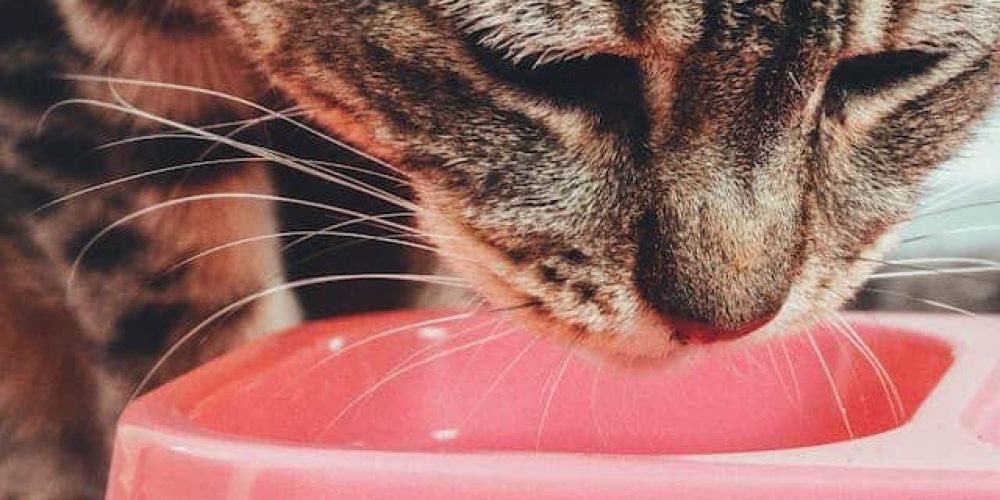How much to feed a cat
When it comes to choosing food for your cat, it can be completely overwhelming for owners with all of the information that is out there, from Google to breeders to people working in pet shops. Where do you start?
No single type of diet or amount is suitable for all cats. It’s important that your cat gets the correct amount of food. Overfeeding can lead to obesity and health conditions related to it such as arthritis, heart problems, diabetes and many others. On the other hand, underfeeding can lead to bad vision, skin problems and a weakened immune system.
How much should a cat eat each day?
How much a cat should eat depends on a few factors, such as their life stage, lifestyle, weight and whether they have the ideal body condition score or not. So how much you feed your cat can vary a lot between individuals.
To work out how much to feed your adult cat, we need to work out their resting (RER) and maintenance energy requirements.
RER (kcal) = (30x bodyweight in KGs) + 70
This equates to 205kcal for a cat weighing 4.5kg (average cat weight in the UK)
To get their maintenance requirements, we need to add activity to RER and take their body condition into account. This is usually around 1.2-1.4 x RER. These requirements are for fully grown cats who are not pregnant or lactating.
Working out how many calories your cat needs is more accurate than using the amounts given on the bag. Calorie requirements can then be converted into cups or grams to make daily measurements easier.
Our Joii vets are nurses are available to help you with this conversion as it can get tricky.
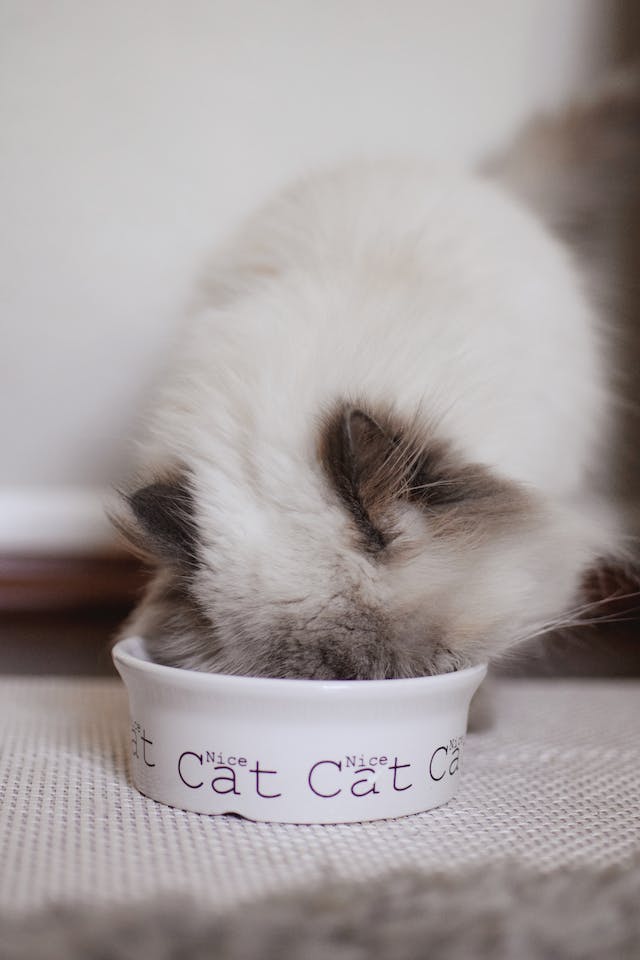
Factors that affect how much to feed your cat
It’s important to remember that not all cats can be fed the same amount and type of food. There are many factors that affect how much, how often and what you should feed your cat.
Size of your cat
The size of your cat has a big impact on how much they should be fed. Smaller cats generally need to eat less than bigger cats. Their breed has a big influence on their size; for example, Maine-Coons tend to be a much larger breed than others. It also depends on their body condition score (BCS). BCS is a scale used to measure if a cat is underweight, ideal weight or overweight.
Body Condition Scoring (BCS) in cats
Body Condition Score (BCS) is a scale that gives a practical evaluation of the fat coverage of your cat’s body. By checking how easy or not it is to feel certain bony areas of the body, a score is then produced. There are several scales, from 1 to 5 or 1 to 9. The ideal body condition lies in the middle, so either 3/5 or 5/9.
The body areas normally checked for fat coverage are:
1. ribs and spine
2. hips and shoulders
3. waist
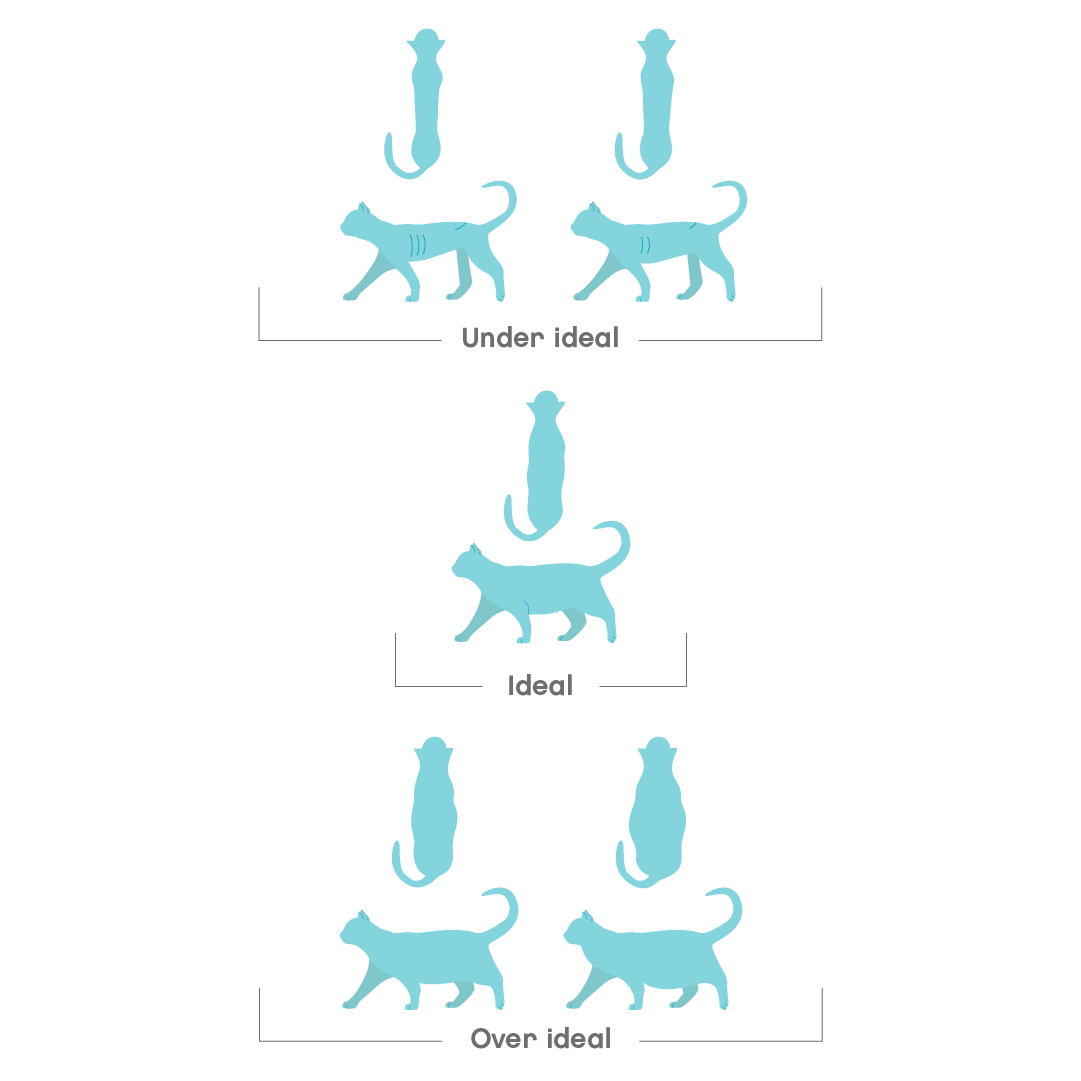
Here are a few tips on how to do it.
With your pet in a standing position:
- Place your hands on the rib cage and gently feel for each rib, without pressing too hard
- Feel the waist and look from the top and the side (if you have a very furry breed, it may be harder to assess)
- Feel the spine, which runs down the middle of the back
- Feel the top of the hips and shoulders
There’s a common misconception that overweight cats should be fed less. This is not always the case. There are foods, such as Hills Prescription Diet r/d or metabolic, that have been designed to help cats lose weight while still feeling full.
Activity level
In general, active cats will have a higher energy requirement and, therefore, need more food than less active cats. How much depends on their activity levels.
Age
Your cat’s energy requirements change as they progress through the stages of their life, from a kitten to an adult to a senior, then a geriatric.
Kittens require a lot of energy to help with growth. Adult and senior cats usually require less energy than kittens. Geriatric cats over 15 years old can struggle to keep their weight up, so this needs to be taken into account. Feeding small, frequent meals can be useful.
At each life stage, a different balance of nutrients, fat and protein is needed.
It’s important to be aware that obesity in cats is most common between the ages of 8 and 10 years old.
Indoor vs outdoor cats
Indoor cats tend to be much less active than outdoor cats so they have a lower energy requirement.
Health status
If your cat has been diagnosed with a chronic condition, their energy requirements may change. Cats with debilitating diseases, like cancer, may benefit from a specially formulated diet that helps them maintain their weight rather than lose it. There are scientifically developed diets available for cats with illnesses such as kidney disease, arthritis, skin disease, urinary problems and many more.
Reproductive status
There’s a common myth that neutering causes cats to become overweight and lazy. This isn’t true, but what is true is that neutered cats have a lower energy requirement – by up to 30% compared to unneutered cats.
In pregnant and lactating cats, the energy requirement is much higher. It’s often recommended to feed kitten food during these events and allow free access to food for grazing all day. The requirements gradually increase from the start of pregnancy up to around 50% when they are due to give birth. During lactation, the requirement is even higher.
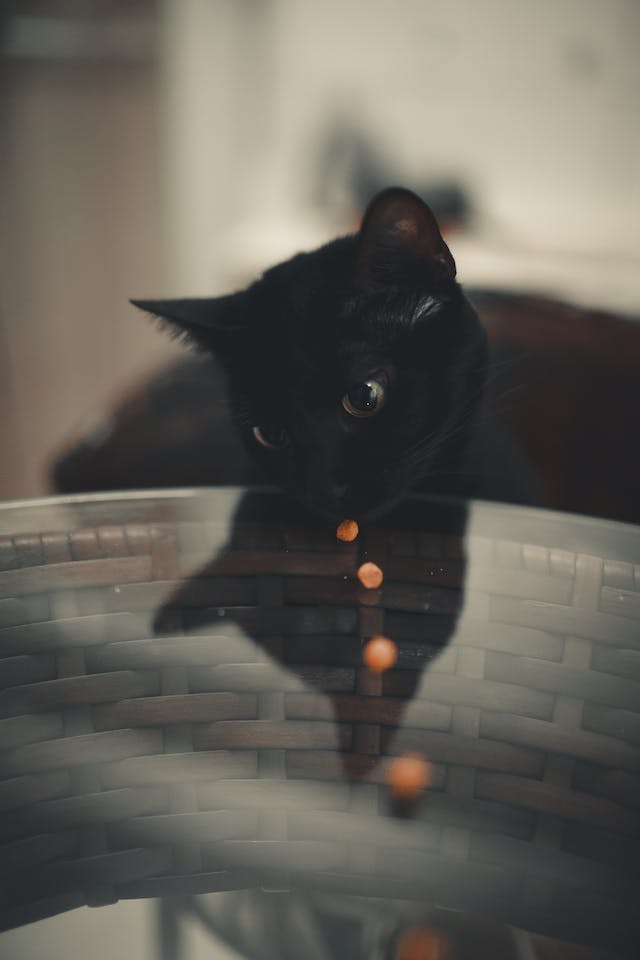
How much should I feed a kitten?
Good nutrition is extremely important for all cats, no matter what age they are, but it is VITAL for kittens. After weaning (7-8 weeks old), it’s not necessary to give them milk or supplement their food; this can sometimes even be harmful. Kitten diets should be specifically made to help with growth and development. They should not be allowed to become overweight.
As a general feeding guide for kittens: maintenance kcal is usually around 2.5 x RER
Should I feed my cat wet or dry food?
For kittens, a combination of both wet and dry is a good option. This can help prevent them from developing strong preferences for one or the other. When they are adults, choosing between wet and dry might depend on whether your cat has any health conditions. Both options have benefits, and a lot of owners tend to feed a combination with good results.
A good-quality, balanced food is essential to keeping your cat happy and healthy. It’s important that it contains the right amount of protein, fat, carbohydrates, vitamins and minerals.
Commonly asked questions about feeding your cat
Our RVN Lisa’s answer to those all-important questions:
Should you feed the amount listed on the cat food can or bag?
Guidelines on the bag or packet can be helpful but it’s important to remember that these are only guidelines and that each cat is different. Using a body condition score to monitor weight loss/gain is advised, as is working out individual calorie requirements.
Do cats eat less in summer?
Cats can eat less in the summer as they do not need to utilise as much energy to keep warm.
Do cats lose weight in summer?
If your cat is active and an outdoor cat, then yes, it’s possible they may lose a little weight during the summer months.
Can I give my cat treats?
It’s fine to give your cats treats – just make sure you aren’t giving too many on a daily basis! Using things like toys to play with your cat can be a great way to reward them instead.
How many times a day should cats eat?
Cats are natural grazers; however, this can make it difficult to monitor their food intake and body weight. Feeding once or twice a day is absolutely fine.
How many times a day to feed a kitten
Kittens can be fed 3-4 times a day.
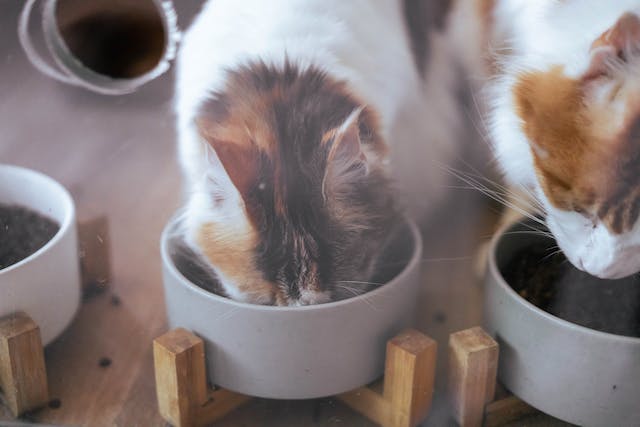
The art of feline nutrition is a delicate balance of keeping portions controlled and their weight stable while maintaining a happy cat who feels full. Hopefully our tips today have helped clear up questions that you, as a cat owner, have about how much to feed your cat.
Our Joii team are available 24 hours a day, 365 days a year. If you have any questions or need help with your cat’s weight, feeding amounts, or choosing a diet, download the app and speak to a professional now.
